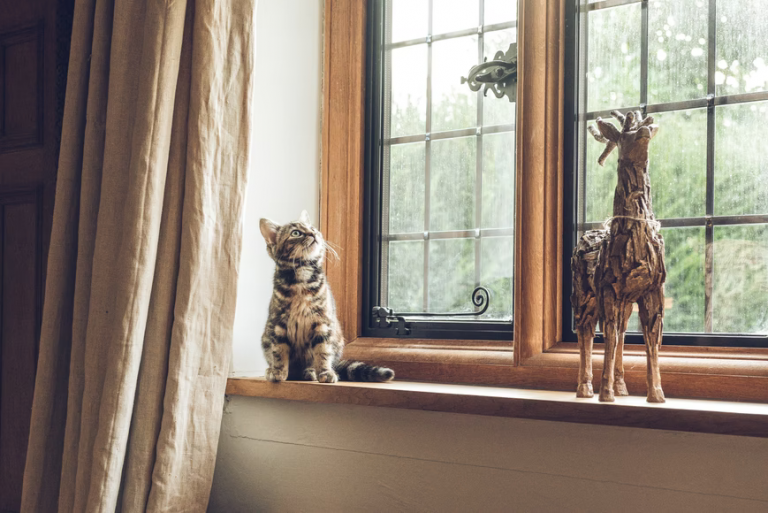When it comes to bringing a pet into the family, there are a lot of things to consider. Factors like providing proper care and love come to mind. However, something that can get lost in the excitement is the fact that pets will have an impact on your home.
For example, there will need to be enough space for beds, toys and food and water bowls, and other furniture from Ashley. You will also need a space outside for the pet to play and do their personal business, whether it’s with real grass or artificial grass. Don’t forget, pet ownership can also throw you curveballs like chewed sofa legs or soiled rugs.
Trying to accommodate all of these basic requirements may seem like an uphill task. However, if you are in the middle of designing your dream home, it’s easy to make these allowances. Resulting in a home that is both functional and aesthetically pleasing.
Home design tips for pet owners
Many homeowners view making their home pet friendly as a task that compromises the home’s overall style. However, this couldn’t be further from the truth. Instead, a pet-friendly home is a space where equal consideration is given to pets and humans.
While the process of designing a home with pets in mind is time-consuming, it’s also rewarding. By using home design tips to account for pet behaviours and activities, humans and pets can live harmoniously in a home that is equal parts stylish and functional.
Tip #1: Make every space functional
When designing a home, for one reason or another, there can be a lot of dead space. For pet owners, this ‘dead space’ can in fact be golden space. The space under the stairs? The perfect location for quick storage of pet toys and bowls when company comes over.
Additionally, you might have a large storage wall that houses the television and a few carefully placed books. On the lower shelves, you could place dog and cat beds. This way, your pet has their own space without the potential of a tripping hazard.
Tip #2: Minimise temptations
If you can’t bring your pet to work with you, they can become destructive and bored. However, by designing a home where temptations are limited, disasters can be avoided. For example, if you don’t want your pet in the kitchen, install a recessed pet gate.
Pet owners can also style their homes to limit temptations. This means opting for furniture that is designed to feature metal framing and legs instead of the typical wood inclusions. This ensures that your destructive pet can’t wreak havoc on your furniture.
Tip #3: Construct a pet entrance
Pets can get wet, muddy and just downright dirty. Instead of bringing them through the front door when they come home from an adventure, have them enter the house through their own designated space.
Instead of being carpeted and surrounded by priceless furniture, design this room as essentially a mudroom for pets. This means that your pet can be cleaned up and wiped down in the shelter of the home without causing even more mess.
Tip #4: Choose smart walls
Dogs can jump on walls trying to catch flies, cats can jump on walls in search of higher ground. Unfortunately, this innate pet behaviour can have dire consequences for your walls.
Instead of putting up with scratched and dirty walls, design your home to feature walls with clean satin or semi-gloss paint. This way, when your pet comes into contact with the wall, pet hair, stains and scratches won’t cause so much damage.
Tip #5: Consider different window stylings
Pets are naturally curious, especially dogs. That’s why it’s important to install window furnishings that are pet friendly. This means lightweight fabric curtains that are sheer in design.
This way, animals won’t lose too much hair all over your curtains. They also won’t get caught up in the curtains during moments of naughtiness. Finally, smart window stylings let your pets perform their favourite activity- watching their owners arrive home from work unless you have an ultradeck where you can keep them.
Tip #6: Paw friendly floors
Installing the right floors- for both your family and your pets- is of the utmost importance. Otherwise, your pets will slip and scratch the floors every time something excites them or makes them nervous.
With this in mind, consider options like laminate, ceramic and stone which are inherently easy to clean and hard-wearing. If your heart is set on carpet, opt for low-pile and stain-resistant carpets, otherwise, pet claws will cause snags and toilet mishaps will stain.
Designing a pet-friendly home
The idea of a pet-friendly home may evoke pictures of lounges covered in dog hair, squeaker toys strewn all over the floor and scratched floorboards. However, all of this can be avoided by designing a home with pets in mind.
Instead of compromising on style, incorporate your pet into your design. This way, dog beds become part of the cabinetry you’ve always wanted and toys can be stored in the buffet you’ve had your eye on. Resulting in an accommodating and yet stylish home.

